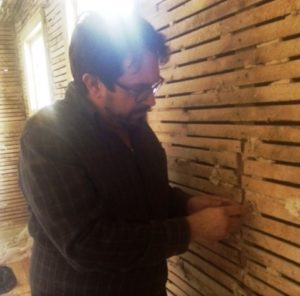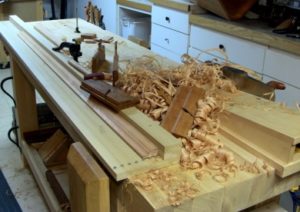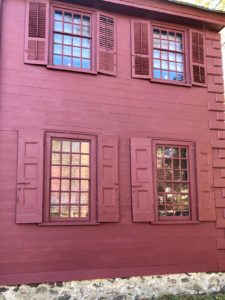Historic Architectural Preservation
Historic architectural preservation conserves resources and builds community, reduces waste and saves money by repairing and reusing existing buildings instead of tearing them down and building new ones. Reusing a historic structure versus tearing it down and building with new materials helps to greatly reduce the carbon footprint of a building. True preservation returns a dwelling into the way it was originally built, the restoration requires using original style tools and techniques and original style materials and fabric. Historic preservation and sustainability are natural partners. Preservation and reuse of historic buildings reduces resource and material consumption putting less waste into landfills and consumes less energy than demolishing buildings and constructing new ones. Historical sites are locations where a country’s community or people’s cultural, social, political and military history is preserved. These things are mostly preserved for their cultural heritage value, which in most cases is irreplaceable once lost.
Gregg Perry, The Historic Preservationist, presents as part of the March 2019 program for the Salem County Historic Preservation Project kickoff.
 This traditional form of plastering is ancient. It starts with a brown coat with a lot of aggregate and hair and is the thickest layer. The next two coats have increases in slaked lime and an extreme decrease in the amount of aggregate and hair. But the top coat has no hair. The first two coats need to be toothed so the subsequent coats will bite into them. Traditional tools, techniques and materials are used. The option to this procedure is premade or riven lath. For conservation purposes, stainless steel lath screws are used to attach the lath.
This traditional form of plastering is ancient. It starts with a brown coat with a lot of aggregate and hair and is the thickest layer. The next two coats have increases in slaked lime and an extreme decrease in the amount of aggregate and hair. But the top coat has no hair. The first two coats need to be toothed so the subsequent coats will bite into them. Traditional tools, techniques and materials are used. The option to this procedure is premade or riven lath. For conservation purposes, stainless steel lath screws are used to attach the lath.
 When deteriorated timbers are found due to damp, vermin or insects, milling and replacement is available. Like species and dimension of timber will be custom cut at our mill to meet the specific demand. Only traditional joiner is used in replacement applications such as mortise and tenon, slotting and sistering.
When deteriorated timbers are found due to damp, vermin or insects, milling and replacement is available. Like species and dimension of timber will be custom cut at our mill to meet the specific demand. Only traditional joiner is used in replacement applications such as mortise and tenon, slotting and sistering.
 Machine split shingles or hand split shakes are available. They are applied using purlin cross members. Stainless steel screws are used for affixing the shingles. Class C fire rated shingles and shakes are available. We also produce custom made canoe-style dugout solid wood gutters where applicable.
Machine split shingles or hand split shakes are available. They are applied using purlin cross members. Stainless steel screws are used for affixing the shingles. Class C fire rated shingles and shakes are available. We also produce custom made canoe-style dugout solid wood gutters where applicable.
 Masonry restoration includes the following; replacing incorrectly placed bricks in past restorations, repairing cracks by the use of metal stitching, repointing, brick face cleaning, custom made bricks including those for gauged brick work applications. We offer repointing of stone foundations. Restoration or new brick sidewalks in custom configurations can be assembled .
Masonry restoration includes the following; replacing incorrectly placed bricks in past restorations, repairing cracks by the use of metal stitching, repointing, brick face cleaning, custom made bricks including those for gauged brick work applications. We offer repointing of stone foundations. Restoration or new brick sidewalks in custom configurations can be assembled .
 Scientific analysis of architectural paint and finishes are available. This includes metallic and clear translucent finishes used on historic buildings. The purposes include determination of ingredients such as media (water, oil, latex, etc) and pigments (organic, inorganic, dyes, etc). The paint analysis can be used, at times, as a dating technique for various building elements. Typical problems encountered in historic paint analysis include such things as paint loss, surface deterioration, newer materials, substrates, delamination, media and pigment deterioration and alligatoring.
Scientific analysis of architectural paint and finishes are available. This includes metallic and clear translucent finishes used on historic buildings. The purposes include determination of ingredients such as media (water, oil, latex, etc) and pigments (organic, inorganic, dyes, etc). The paint analysis can be used, at times, as a dating technique for various building elements. Typical problems encountered in historic paint analysis include such things as paint loss, surface deterioration, newer materials, substrates, delamination, media and pigment deterioration and alligatoring.
 We offer a full service mill shop which can provide various types of exterior wood siding and custom moldings.
We offer a full service mill shop which can provide various types of exterior wood siding and custom moldings.
 We provide restoration on period sash and doors when 65% of the fabric is still viable. We provide new builds of sash and doors utilizing period tools and techniques and using like new timber. We offer restoration glass and its cutting to size and shape.
We provide restoration on period sash and doors when 65% of the fabric is still viable. We provide new builds of sash and doors utilizing period tools and techniques and using like new timber. We offer restoration glass and its cutting to size and shape.
 Refurbished timbers from period houses are available for flooring. They have been denailed and skim-planed (note – period timbers with a wonderful patina will not be skim-planed). Timbers can be lap-jointed and/or tongue and groove. Reproduction nails are available.
Refurbished timbers from period houses are available for flooring. They have been denailed and skim-planed (note – period timbers with a wonderful patina will not be skim-planed). Timbers can be lap-jointed and/or tongue and groove. Reproduction nails are available.